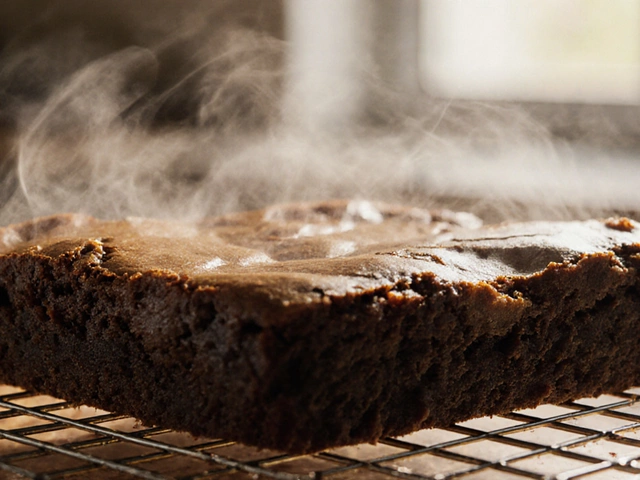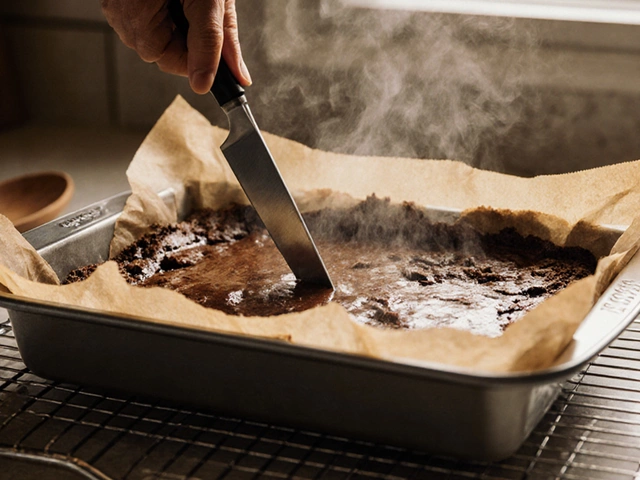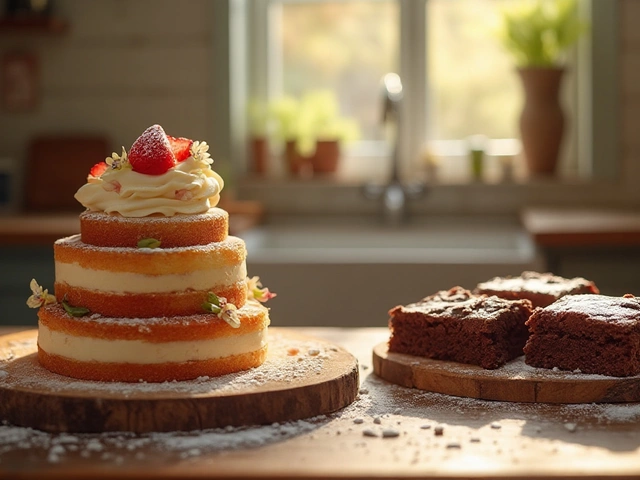
Ever heard someone joke they're a "level 5 vegan"—like they're collecting badges for avoiding even the tiniest animal byproduct? Turns out, the idea isn't just a punchline from The Simpsons. It’s become a badge of honor (or frustration, depending on who you ask) in vegan conversations and online forums. Some treat it as the gold standard of no-compromise, no-loophole plant-based living. But what does it actually mean to be a level 5 vegan? Is it even possible in the real world, or is it just a wild fantasy chased by the most devoted vegans? Let’s unpack where the term came from, what it looks like in daily life, and why anyone would want to try it, even for a week. Spoiler: It’s not for the faint of heart or the lazy pancake-flipper.
Where Did Level 5 Veganism Come From?
This whole "level 5 vegan" business didn’t start in a nutrition class or animal rights handbook. It’s actually a pop culture invention, straight from a 1997 episode of The Simpsons. Lisa Simpson meets a mysterious vegan who claims he’s a “level 5 vegan” and won’t eat anything that casts a shadow. It was meant as a joke, poking fun at endless food restrictions. But vegans ran with it, giving the phrase its own life in blogs and TikToks, usually to humorously describe someone who goes well past what regular vegans would ever do.
But it isn’t just a meme. Some vegans have embraced the concept and pushed it to extremes. Instead of stopping at not eating animals or animal products, they research every ingredient, scrutinize suppliers, and ask big questions: Did that sugar get filtered with bone char? Was that bread made with palm oil that destroys orangutan habitats? Is that vitamin D3 sourced from sheep’s wool? To some, level 5 means not just avoiding harm to animals but digging into everything from the glue in your shoes to the ink in your receipts.
The term now pops up all over the internet, sometimes as a badge of sincerity and sometimes as friendly teasing within vegan circles. There’s a kind of challenge to it, like the food world’s version of ultra-marathoners. A few websites—some less tongue-in-cheek than others—outline “rules” for level 5 veganism, even if everyone admits the goal posts keep moving as people discover new ways animal products sneak into daily life. If you want something that draws lines in the sand, sorry. This is more of a constantly moving beach, but knowing where the tide came from helps make sense of today’s vegan scene.
How Far Does Level 5 Veganism Go?
Think regular veganism is hard? Level 5 veganism makes that look like baby steps. Standard veganism means skipping animal products: no meat, dairy, eggs, honey. But level 5? That’s full detective mode. You’re scanning everything: food, personal care, household goods, clothes, and even weird stuff like photo paper (some have gelatin!).
Here’s a taste of what a level 5 vegan might look for:
- Sugar: Regular table sugar is sometimes processed using bone char, especially in the US. So a level 5 vegan would choose only certified vegan sugar, or avoid refined sugar altogether.
- Alcohol: A lot of wines and beers are “clarified” with fish bladder (isinglass), gelatin, or egg whites. Vegan alcohol brands get the green light—everything else requires serious Googling.
- Palm oil: Most palm oil is technically plant-based, but it’s linked with massive deforestation and animal habitat destruction. Avoiding it is pretty standard for level 5 vegans.
- Colorings and additives: Ever seen "cochineal" or "carmine"? That’s crushed beetles used for red coloring. Gelatin hides in marshmallows and gummy candies. L-cysteine, an ingredient in some bread, is from bird feathers or human hair. Even vitamin D3 often comes from lanolin (sheep’s wool).
- Personal care: Red lipstick might have carmine, soaps and lotions often have lanolin, collagen, or beeswax. Hair brushes? Watch out for boar bristles. That “natural” sunscreen? Could be full of beeswax or animal-derived glycerin.
- Clothing and shoes: Leather, wool, silk, down, suede, and fur are out. So are glues from animal sources (think that random jelly bean sneaker), and buttons made from mother-of-pearl.
Seriously, you start to see animal products everywhere once you really look. Back in 2022, a UK vegan organization found that around 61% of hair conditioners on popular supermarket shelves contained at least one animal-derived ingredient! And many common medications and supplements use lactose or gelatin as a base.
Here’s a quick look at hidden animal products you might not expect:
| Product | Hidden Animal Ingredient | Common Source |
|---|---|---|
| White Sugar | Bone Char | Beef Bones |
| Beer/Wine | Isinglass | Fish Bladder |
| Bread | L-Cysteine | Poultry Feathers/Human Hair |
| Vitamin D3 | Lanolin | Sheep's Wool |
| Red Candy | Carmine (E120) | Scale Insects |
| Marshmallows | Gelatin | Pig/Cow Bones and Skin |
Living like this isn’t for everyone. It can be time-consuming, expensive, and sometimes socially awkward (try quizzing your server about the ink used in food labels). But for people with sky-high ethics—or just unbeatable curiosity—it’s all about staying true to their beliefs without compromise.

Why Go to Level 5? What’s the Point?
Isn’t regular veganism good enough? For most people, absolutely. But there’s more behind the level 5 vegan drive than just being different. Some people see even the tiniest bit of animal exploitation as a line they won’t cross. For them, it’s about total commitment—a way to make their ethics match up with their actions in every corner of life.
There’s a real-world impact, too. People who go this hard into veganism often become super-informed activists. They’re the ones sending emails to big food brands, asking about “stealth” animal products and forcing corporations to change. Ten years ago, finding a vegan marshmallow was basically impossible. Now? You’ll find them in the baking aisle, and that happened because people pushed for complete transparency.
It also raises the bar for what we expect as consumers. If people ask awkward questions, companies start creating “accidentally vegan” lists, add vegan labels, or switch up their recipes. Consider Oreos—people debated for years if they’re vegan, until Nabisco finally clarified. Now, more brands add “suitable for vegans” on their packaging, just to avoid controversy. This attention to detail helps people with allergies and environmental concerns too, so it’s a ripple effect.
Some do it for animal welfare, others for environmental reasons, or health (though honestly, a lot of vegan junk food is still… junk). And then there are those who just love a good challenge—figuring out how to make vegan croissants that taste just as good as the buttery originals, or swapping sweets so their kids like Dariel and Thalia never feel left out at a birthday party.
You might see some critics online calling level 5 vegans “elitist” or “gatekeepers.” But a lot of people involved just like having standards that push the food and beauty industry to be better. And every so often, poking fun at your own impossible standards keeps the whole thing grounded. As the saying goes, if you can’t laugh at yourself once in a while, you’ll probably end up eating something with beetle shell powder anyway.
Can Anyone Actually Live as a Level 5 Vegan? Tips and Real-Life Strategies
Is level 5 veganism even realistic? Not for everyone, honestly. There’s a big difference between knowing where your food comes from and being able to filter your whole life through a vegan lens. Unless you plan to start a homestead and make your own toothpaste, at some point, you’ll hit a wall with hidden animal products—or just run out of time and money. But it’s not all doom and gloom. Plenty of people find a groove that works for them, even if they bend the rules occasionally.
Here’s how some people make level 5 vegan life doable (or at least less maddening):
- Build a reliable “safe” list. Seek out products and brands with official vegan certifications, not just vague labels. Third-party organizations like The Vegan Society, Certified Vegan, or Leaping Bunny vet everything so you don’t have to become Sherlock Holmes every shopping trip.
- Stock up on apps. Barnivore is the go-to for wines and beers, and Is It Vegan? helps scan food barcodes. Some beauty brands, like Pacifica or Lush, have strict policies and transparent ingredients lists.
- DIY where possible. If you can make your own desserts, snacks, and even simple soaps, you get full control over ingredients. It’s fun with kids, too—mine love testing vegan cookie recipes that actually pass for “normal.”
- Don’t be shy to ask questions. Email brands or check their Twitter replies for ingredient info. A lot of companies are used to unusual requests, and some even have FAQ pages just for vegans now.
- Forgive yourself for slip-ups. If you grab a muffin and find out days later it had “confectioner’s glaze” (that’s shellac from beetles), chalk it up to learning. The aim is effort, not impossible perfection.
Even at level 5, most seasoned vegans agree: stress, guilt, or shame shouldn’t be the main course. Do your best, get picky where it matters most to you (for some it’s food, others focus on cruelty-free fashion or zero-waste swaps), and share your discoveries. I once found out that some brands of powdered sugar at my local shop were using animal bone char—after switching, I started recommending my new find to everyone. Word of mouth matters.
If you’re raising vegan kids, don’t sweat the small stuff. Birthday parties, playdates, and Halloween can get tricky. It’s fine to give them the tools and let them decide how strict they want to be. Sometimes just having a killer vegan brownie recipe in your back pocket saves a ton of stress and awkward explanations.
The point isn’t to out-vegan your neighbor. It’s about pushing companies to do better, protecting animals and the planet when you can, and living your values as much as real life allows. And if you accidentally eat a cookie with honey in it? You’re still part of the answer, not the problem. Maybe don’t call yourself “level 5” on Instagram that day, but don’t beat yourself up either.





